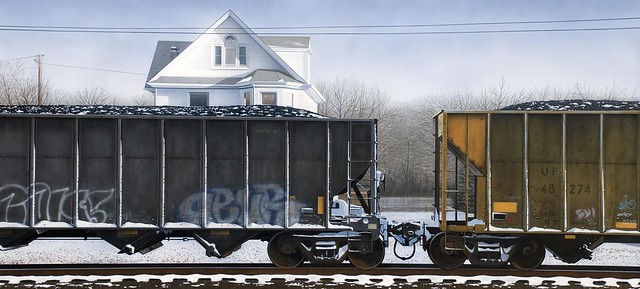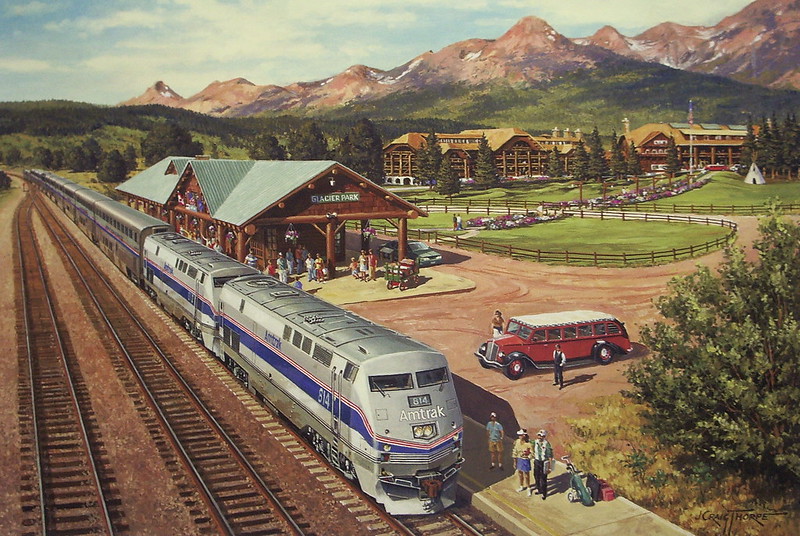See our Flickr gallery of sample work from survey respondents.
We learned a lot more about contemporary rail artists. For example, most (57.7%) were either self-employed, employed part-time, or retired. A little over one quarter of respondents to our survey included some reference to the arts as part of their career. Frequent terms included “artist”, “graphic designer”, and “painter.” Slightly fewer (21%) mentioned current or past employment in the rail transportation industries.
Most of the artists we got responses from were self-taught, with only a little under a third having formal arts educations. Only 29 respondents described themselves as full-time artists, although another 33 stated they were working towards that goal.
Methods used by the artists were pretty evenly split between the three most popular painting mediums (oil, watercolor, and acrylics) and both pencils and inks. The category “other” had a strong showing as well, and included a variety of methods such as 3-D modelling, digital graphic designs, and digitally created paintings.
Excerpts from Responses
One of the most illuminating parts of our survey was the range of comments. Artists told us about how they became interested in railways, how they developed their artistic abilities, and what inspires them. Here are some anonymous selections from the survey that we found engaging.
“My interest in trains goes as far back as my earliest childhood memories. Long before I could walk or talk, I remember being particularly aware of a sound at night that held me transfixed. It was complex… melodic… mysterious… mournful… and lugubrious. It was the sound of steam locomotive whistle on the Chicago and North Western mainline, which ran a mile from our house. Some people thought trains were part of my genetic make-up because I developed an interest in them so quickly. I responded to the whistle before I even knew what it was.”
“I discovered painting in my formidable years of college and always had been inspired by the work of photo realistic rail artists like Mike Schafer, Mike Dannemann and Gil Reid and started basing a lot of my subject matter on trains and railroads as my knowledge of color theory and painting technique began to develop.”
“I enjoy watching trains, artistically they are a cascade of changing shapes and shadows. In some mediums they are very linear and my style resonates with that aspect. The Industrial aspect shows beauty in mans intrusions into nature.”
“One of my favorite subjects is old towns in the upper midwest, mainly Minnesota, North Dakota, and eastern Montana, that were created because of the railroads, and whose fates were tied to those rails. People came with the trains and left when the trains stopped coming. Usually the train cars themselves are long gone, and only tracks remain, and other times even those have gone.”
“I like to show the human connection to the machines. Throughout my career I have learned to appreciate the moods of railroading and how it effects the humans that are part of that moment. The moods are part of the story that I attempt to create and share.”
Learn More
To learn more about this project, see issue 34 of Railroad Heritage. To see samples of work from artists who responded to the survey, as well as contact information for artists taking commissions, see our Flickr gallery, or view the slideshow below.



